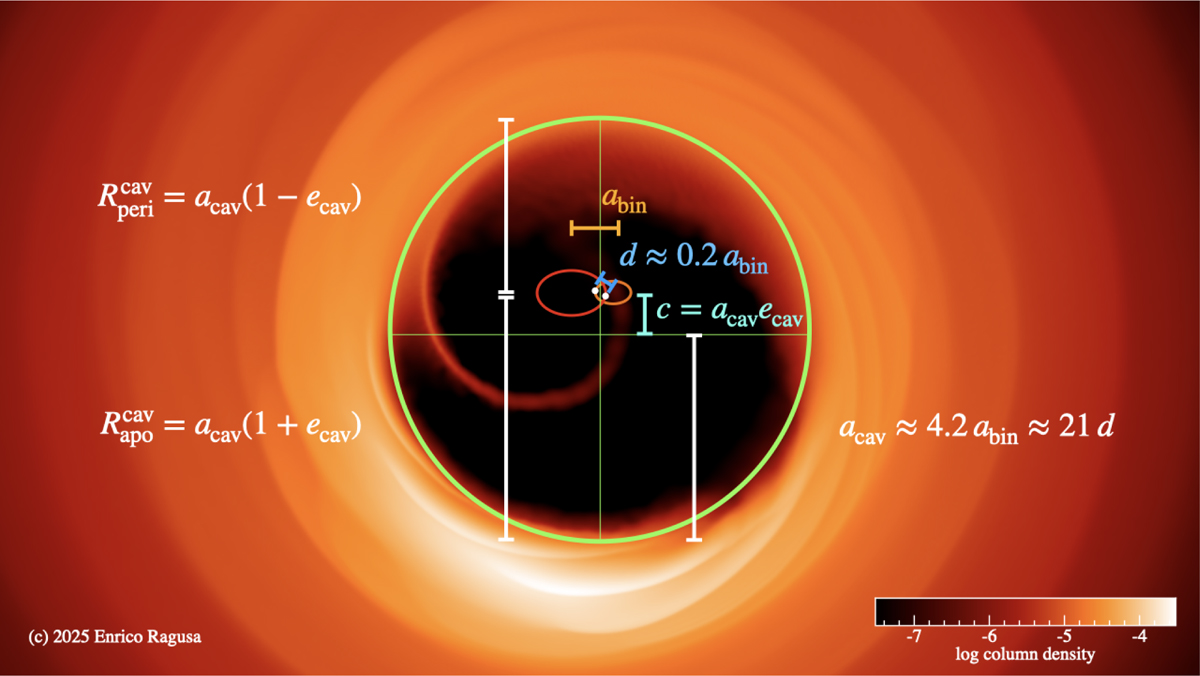Fig. 1

Download original image
Snapshot of a numerical simulation of a circumbinary disc captured in the extreme situation in which the cavity size acav appears to be larger by a factor ∼21 than the apparent separation d of the binary. The snapshot was produced using the code PHANTOM (Price et al. 2018). It shows a binary with a mass ratio M2/M1 = 0.5, semi-major axis abin = 1, and eccentricity ebin = 0.8 close to its pericentre, that is, with a projected binary separation of d ∼ 0.2 abin. The binary produces a cavity with an eccentricity ecav ∼ 0.2 and a semi-major axis acav ∼ 4.2 abin (consistent with the expected truncation radius by such a binary; see Sect. 3.2), which is equivalent to acav ∼ 21 d. The two white dots mark the position of the two binary stars, and the orange and red ellipses show the orbits of the primary and secondary object, respectively. The binary spends far less time at its pericentre than at the apocentre. It is therefore unlikely that the binary is observed in this configuration, but it is still possible.
Current usage metrics show cumulative count of Article Views (full-text article views including HTML views, PDF and ePub downloads, according to the available data) and Abstracts Views on Vision4Press platform.
Data correspond to usage on the plateform after 2015. The current usage metrics is available 48-96 hours after online publication and is updated daily on week days.
Initial download of the metrics may take a while.


